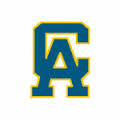What do they do?
Perform precision smoothing, sharpening, polishing, or grinding of metal objects.
Also known as:
Crankshaft Grinder, Cutter Grind Tool Technician, Cutter Grinder, Die Polisher, Finisher, Grinder, Grinder Operator, OD Grinder Operator (Outer Diameter Grinder Operator), Polisher, Saw Filer, Saw Fitter, Thread Grinder, Tool and Cutter Grinder, Tool Grinder, Workcell Operator
-
-20%
Change
Ranks #38 in job growth rate10Job Openings
Ranks #24 in net job growth
Looking for colleges that offer a specific major? Use the College Match Tool to find your best-matched schools and discover your estimated Net Price!
- High school diploma equivalent (49%)
- Some college, no degree (20%)
- Less than high school diploma (17%)
- Associate's degree (8%)
- Bachelor's degree (5%)
- Master's degree (1%)
- Doctorate or Professional Degree (<1%)
People in this career often have these skills:
- Operations Monitoring - Watching gauges, dials, or other indicators to make sure a machine is working properly.
- Operation and Control - Controlling operations of equipment or systems.
- Quality Control Analysis - Conducting tests and inspections of products, services, or processes to evaluate quality or performance.
- Equipment Maintenance - Performing routine maintenance on equipment and determining when and what kind of maintenance is needed.
- Repairing - Repairing machines or systems using the needed tools.
People in this career often have talent in:
- Arm-Hand Steadiness - The ability to keep your hand and arm steady while moving your arm or while holding your arm and hand in one position.
- Manual Dexterity - The ability to quickly move your hand, your hand together with your arm, or your two hands to grasp, manipulate, or assemble objects.
- Finger Dexterity - The ability to make precisely coordinated movements of the fingers of one or both hands to grasp, manipulate, or assemble very small objects.
- Control Precision - The ability to quickly and repeatedly adjust the controls of a machine or a vehicle to exact positions.
- Near Vision - The ability to see details at close range (within a few feet of the observer).
- Problem Sensitivity - The ability to tell when something is wrong or is likely to go wrong. It does not involve solving the problem, only recognizing that there is a problem.
- Visualization - The ability to imagine how something will look after it is moved around or when its parts are moved or rearranged.
- Selective Attention - The ability to concentrate on a task over a period of time without being distracted.
People in this career often do these activities:
- Watch operating equipment to detect malfunctions.
- Operate grinding equipment.
- Inspect finishes of workpieces or finished products.
- Measure dimensions of completed products or workpieces to verify conformance to specifications.
- Study blueprints or other instructions to determine equipment setup requirements.
- Review blueprints or other instructions to determine operational methods or sequences.
- Select production equipment according to product specifications.
- Mount attachments or tools onto production equipment.
- Calculate specific material, equipment, or labor requirements for production.
- Set equipment controls to meet cutting specifications.
- Adjust equipment controls to regulate coolant flow.
- Apply solutions to production equipment.
- Smooth metal surfaces or edges.
- Clean production equipment.
- Maintain production or processing equipment.
- Lubricate production equipment.
- Remove products or workpieces from production equipment.
- Package products for storage or shipment.
- Assemble machine tools, parts, or fixtures.
- Mount materials or workpieces onto production equipment.
- Operate welding equipment.
- Draw guide lines or markings on materials or workpieces using patterns or other references.
- Remove accessories, tools, or other parts from equipment.
- Replace worn equipment components.
- Immerse objects or workpieces in cleaning or coating solutions.
- Apply protective or decorative finishes to workpieces or products.
- Shape metal workpieces with hammers or other small hand tools.
This page includes data from:

 Occupation statistics: USDOL U.S. Bureau of Labor Statistics Occupational Employment Statistics
Occupation statistics: USDOL U.S. Bureau of Labor Statistics Occupational Employment Statistics


















